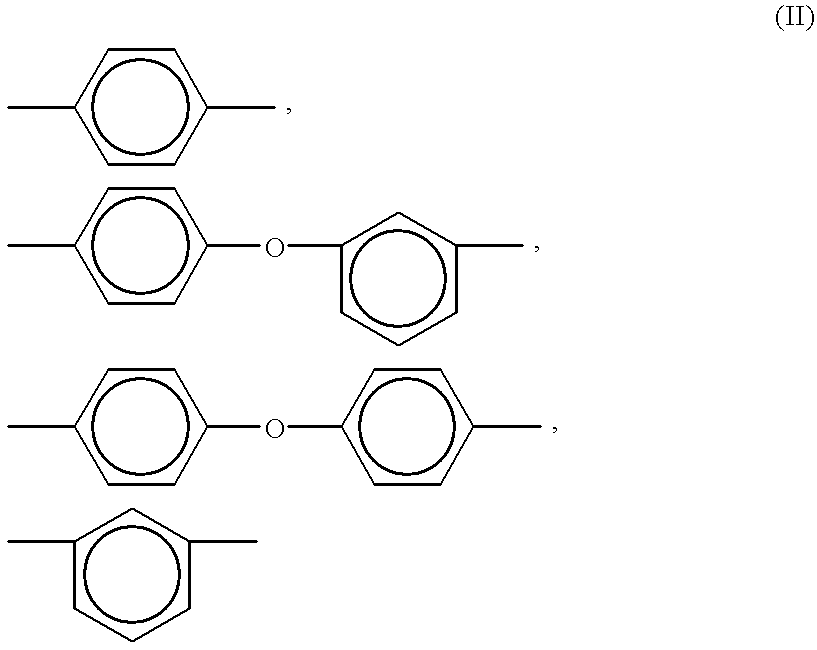Heat-resistant fiber paper
a fiber paper and heat-resistant technology, applied in the field of heat-resistant fiber paper, can solve the problems of poor electrical insulation properties of paper, inability to use paper as the base substrate for electrical insulation, and inability to meet the requirements of high reliability, and achieve high interlaminar peeling strength, low bulk density, and high tensile strength
- Summary
- Abstract
- Description
- Claims
- Application Information
AI Technical Summary
Benefits of technology
Problems solved by technology
Method used
Image
Examples
example 1
A paper making slurry for having a fiber concentration of 0.15% by weight was prepared by suspending staple fibers of 95% by weight, consisting of copolyparaphenylene / 3,4'-oxydiphenylene terephthalamide of which fiber surfaces were adhered with a talc of 0.5% by weight and an osmose of 0.1% by weight, having an individual fiber thickness of 1.5 denier, a fiber length of 3 mm and an equivalent water content of 4.1% (Technora: made by Teijin Limited) and fibrids of 5% by weight, consisting of copolyparaphenylene / 3,4'-oxydiphenylene terephthalamide (made by Teijin Limited) into water by a pulper and adding a dispersing agent (YM-80; made by Matsumoto Yushi K. K.) so as to make a concentration of 0.02%.
Next, a fiber sheet was prepared by using a Tappi square type hand paper forming machine and the above paper forming slurry, pressing for a light dehydration and then drying for about 15 minutes in a hot air dryer at a temperature of 160.degree. C. Further, a heat resistant fiber sheet ha...
examples 2 to 7
, and Comparative Examples 1 to 2
A heat resistant fiber sheet was produced similarly to the Example 1 except for changing the mixing ratios of the staple fibers consisting of the copolyparaphenylene / 3,4-oxydiphenylene terephthalamide with the fibrids consisting of the copolyparaphenylene / 3,4-oxydiphenylene terephthalamide, in the Example 1 as shown in Table 1.
example 8
A heat resistant fiber sheet was produced similarly to the Example 2 except for using fibrids consisting of a polyparaphenylene terephthalamide having an equilibrium water content of 5.4% (made by Koron Co., Ltd.) instead of the fibrids consisting of the copolyparaphenylene / 3,4'-oxydiphenylene terephthalamide, in the Example 2.
PUM
| Property | Measurement | Unit |
|---|---|---|
| length | aaaaa | aaaaa |
| length | aaaaa | aaaaa |
| density | aaaaa | aaaaa |
Abstract
Description
Claims
Application Information
 Login to View More
Login to View More - R&D
- Intellectual Property
- Life Sciences
- Materials
- Tech Scout
- Unparalleled Data Quality
- Higher Quality Content
- 60% Fewer Hallucinations
Browse by: Latest US Patents, China's latest patents, Technical Efficacy Thesaurus, Application Domain, Technology Topic, Popular Technical Reports.
© 2025 PatSnap. All rights reserved.Legal|Privacy policy|Modern Slavery Act Transparency Statement|Sitemap|About US| Contact US: help@patsnap.com

